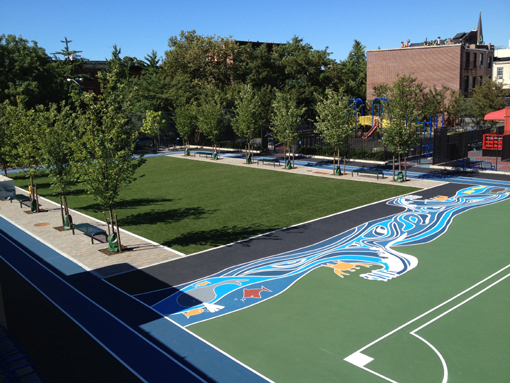New ‘green’ playground at P.S. 261 will help prevent flooding of Gowanus Canal
First of up to 40 water-capturing playgrounds

The days of the hard, asphalt school playground may be numbered: A new type of “green” playground was dedicated at Brooklyn’s P.S. 261 on Thursday that will help manage stormwater runoff and alleviate the flooding of the Gowanus Canal.
New York City and The Trust for Public Land, partners in this project, say P.S. 261’s colorful new play-yard is one of up to 40 playgrounds that will include “green” infrastructure to soak up water during rainstorms, easing pressure on the city’s sewer system and improving the health of waterways.
Many New York City residents may not realize that city’s sewer system allows rainwater to mix with sewage during storms. Overflow is sent straight into waterways, which may then flood into streets and basements. Gowanus residents have complained for years about the overflow from the filthy Gowanus Canal, which receives roughly 300 million gallons of sewage and rainwater every year. P.S. 261’s playground will help by managing almost half a million gallons of this stormwater annually.

Brooklyn Boro
View MoreNew York City’s most populous borough, Brooklyn, is home to nearly 2.6 million residents. If Brooklyn were an independent city it would be the fourth largest city in the United States. While Brooklyn has become the epitome of ‘cool and hip’ in recent years, for those that were born here, raised families here and improved communities over the years, Brooklyn has never been ‘uncool’.